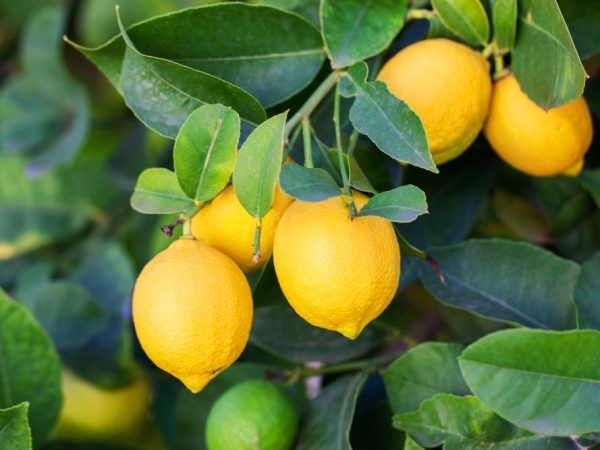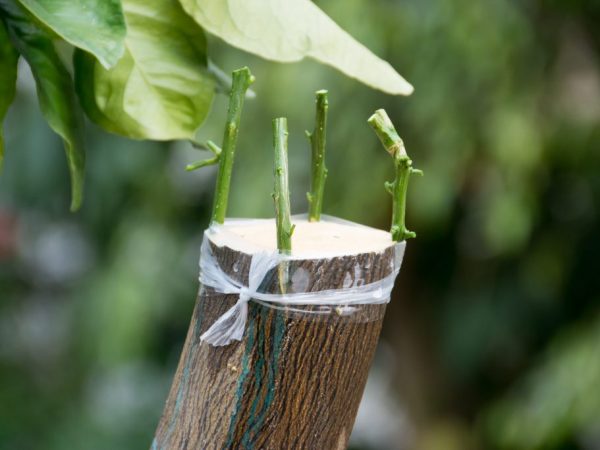Planting lemon at home
Lemon is a citrus plant native to China. The twigs and foliage of the tree contain pores that give off a wonderful scent during flowering. Lemon can be planted at home.

Planting lemon at home
Features of planting lemon
Planting lemon at home is easy. Pick up seeds for planting and prepare the soil.
Purchase a pot and good quality sowing soil. There should be drainage and holes. Use stones or nutshells for drainage.
Large seeds are selected from ripe citrus. Lemon is planted with seeds already treated with a biostimulant, so that they germinate faster and form strong roots. To do this, soak the seeds overnight in the solution prepared according to the instructions.
Plant a lot of seeds, at least 20 pieces. They should be planted wet, otherwise they will sprout for a long time, or they will not germinate at all. Not all will ascend houses, and the best are chosen from them.
Buy the soil or make it yourself. Mix leafy earth, humus in equal proportions, add sand and peat to add airiness. The seeds must be planted at a depth of 2 cm. In order for the seed to germinate, the temperature must be at least 18 ° C. Next, cover the top of the pot with a plastic cup, cut-off bottle or plastic wrap and place it in a warm place to create a greenhouse environment. Keep the seedlings in the greenhouse until at least 4 leaves appear.
After sowing, spray the plant rather than watering it to prevent the seeds from becoming moldy and suffocating. Watering is only allowed if the ground is cracking. Even after sprouting, control the watering time so that the root system does not rot. The plant needs moisture as the soil dries out.
The shoots appear at different times - from 14 to 30 days. Gradually accustom the plant to room temperature and humidity by spraying frequently. As soon as the plant begins to get used to the prevailing conditions, transfer the pot to a brighter place, but not in direct sunlight.
Growing recommendations
To plant a lemon at home, prepare the necessary conditions for it. If you follow the rules of care, you can grow a healthy, fruiting and flowering plant.
- To stand water for irrigation at room temperature or use rain and melt water at room temperature.
- In the first months, the plant should not be fed. In the spring and summer, water with biofertilizer.
- Lemon is a demanding and capricious plant, especially when grown at home. It prefers a stable temperature and moderate humidity. Rapid changes in climatic conditions and improper care will instantly worsen the condition of the plant.
- A dry hot climate, direct sunlight, drafts can cause the leaves to fall off and even the death of the plant. Spray the tree frequently. Rinse it with water as Lemon is a tropical dweller and is comfortable with high humidity.
- Reduce watering by autumn.Make sure that water does not stagnate and that excess water easily flows out of the container through the openings.
- From February to September, the lemon tree grows quickly, feed it with liquid biofertilizers in turn with mineral fertilizers.
- Form the crown of the tree in the first year of life. Remove any damaged, improperly growing, or simply weak branches and shoots.
- The plant requires auxiliary lighting - in spring and autumn.
- The lemon tree requires frequent replanting. The best times for this procedure are June and February. To choose the right seedlings for transplanting, inspect the crown for density. Choose those seedlings where the distance between the buds is the smallest. The fewer needles a plant has, the better. Be sure to check the leaves, they should hold tight, not fall off with a light touch. Do not take thin and weak shoots with bad leaves.
- Shape the tree so that it has a lush shape and the side shoots grow actively. It is recommended to do this in the first year of growth.
- When the plant blooms in the first year at home, cut off all the flowers so that they do not take energy from the tree. If there are at least 15 leaves on the tree, leave the flowers.
- The tree can be grown from both seeds and seeds. From seeds it will turn out to grow faster.
At home, it is possible to plant many types of lemon: Pavlovsky, Maikop, Eureka, Genoa, Meyer, Novogruzinsky. The most productive is Maykop. Genoa and Eureka varieties give small fruits.
How to plant lemon at home

Lemon will not bear fruit without grafting.
Prepare quality material and tools before grafting lemon at home. In order for the graft to take root, you should follow the recommendations of professionals and the sequence, otherwise a beautiful tree will grow from the seed, but it will not bear fruit.
The best option is to vaccinate with whips. The sequence of the procedure:
- treat the seedling and stock with a damp cloth;
- pruning shears horizontally cut the tree at a height of 5-10 cm from the ground;
- with a sharp knife, cut the trunk in the middle to a depth of 2-3 cm;
- on the scion, make two oblique cuts in the form of a sharp wedge 2.5-3 cm long;
- insert a ready-made lemon branch into the cleft;
- Wrap the grafting site tightly, and cover the stump with a garden varnish. Indoor lemon pests and diseases
Pest control
Common pests of the lemon tree at home are scale insects, aphids, spider mites, and worms. They suck the juice out of the lemon, twist the shoots, dry the leaves.
Pest Control Rules:
- Brush insects off the branches with a toothbrush. From the leaves - with a cotton swab. Treat the wood with anabasine sulfate soap solution.
- After a day, rinse the solution. After a week, repeat the treatment.
- If the lesion is profuse, treat the lemon with a solution of onions, garlic, celandine and tobacco.
Effective means of struggle: Aktellik, Fitoverm (biological product). Use chemicals carefully at home - these are strong poisons.
Conclusion
The lemon tree blooms and bears fruit for 45 years. Viability depends on the characteristics of the climate and care. Planting a lemon at home and growing a beautiful southern plant is real. If you create suitable conditions for it, it will delight with its bright color and delicious fruits.

